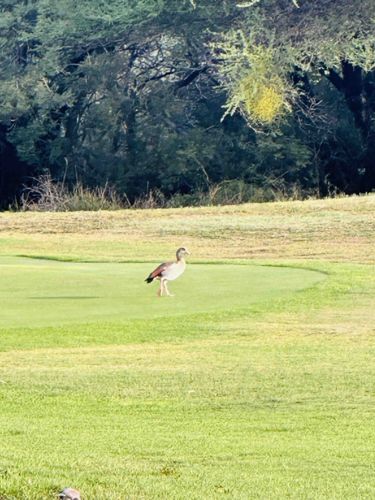Egyptian Goose (Alopochen aegyptiaca)
Classification: Class: Aves (Birds), Order: Anseriformes (Waterfowl), Family: Anatidae (Ducks, Geese, and Swans), Genus: Alopochen, Species: A. aegyptiaca

Brief Description
The Egyptian Goose is a large, terrestrial waterfowl species with a striking appearance. They are often seen grazing on grass near water bodies, and unlike many geese, they are quite active on land. They are known for their territorial behavior, especially during breeding season.
Additional Information
- Region of Origin: Africa, particularly the Nile Valley and sub-Saharan Africa. Introduced populations also exist in Europe.
- Typical Sighting Period: Year-round in their native range; spring and summer in introduced populations during breeding season.
- Plumage Details: Distinctive brown and grey body with darker brown patches on the back and wings. They have a prominent reddish-brown patch around the eye, a dark collar, and pinkish legs and beak. The underwing coverts are white, visible in flight.
- Ecological Significance: As grazers, they can impact vegetation in certain areas. In some introduced populations, their high numbers can lead to competition with native species for resources and may cause agricultural damage. In their native range, they are a natural part of aquatic ecosystems.
- Conservation Status: Least Concern (LC) globally due to a large and stable population. However, they are considered an invasive species in some areas where they have been introduced.
- Observation Tips: Look for them in open grassy areas near freshwater bodies such as lakes, ponds, rivers, and golf courses. They often tolerate human presence but can be wary. Observe their distinct calls, which can be noisy, especially when in a flock or defending territory.